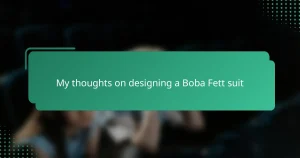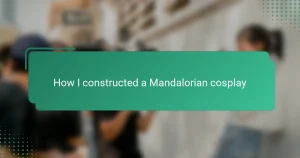Key takeaways
- Crafting sci-fi props blends creativity with technical skill, enhancing storytelling through tangible objects.
- Successful helmet building requires high-quality materials, tools, and a step-by-step approach for precision and detail.
- Patience is essential throughout the process, from sanding to painting, ensuring a polished final appearance.
- Building a community and seeking advice can provide valuable support and motivation during challenging projects.

Introduction to science fiction props
Science fiction props hold a special place in my heart because they bring imaginative worlds to life through tangible objects. Have you ever wondered how something so otherworldly can feel so real? For me, picking up a well-crafted sci-fi prop is like holding a piece of a story that once existed only in someone’s mind.
I’ve always been fascinated by the craftsmanship behind these props, whether it’s a sleek blaster or a mysterious helmet. It’s amazing how every curve and detail can convey a character’s personality or hint at a larger universe. This blend of creativity and technical skill is what makes science fiction props endlessly inspiring.
What makes these props even more compelling is their ability to spark curiosity and wonder. When I first started exploring science fiction props, I found myself asking, “How were these made?” That question is the starting point of many exciting projects, including building my own Stormtrooper helmet. It’s a journey that combines passion, patience, and a deep appreciation for the art of sci-fi storytelling.
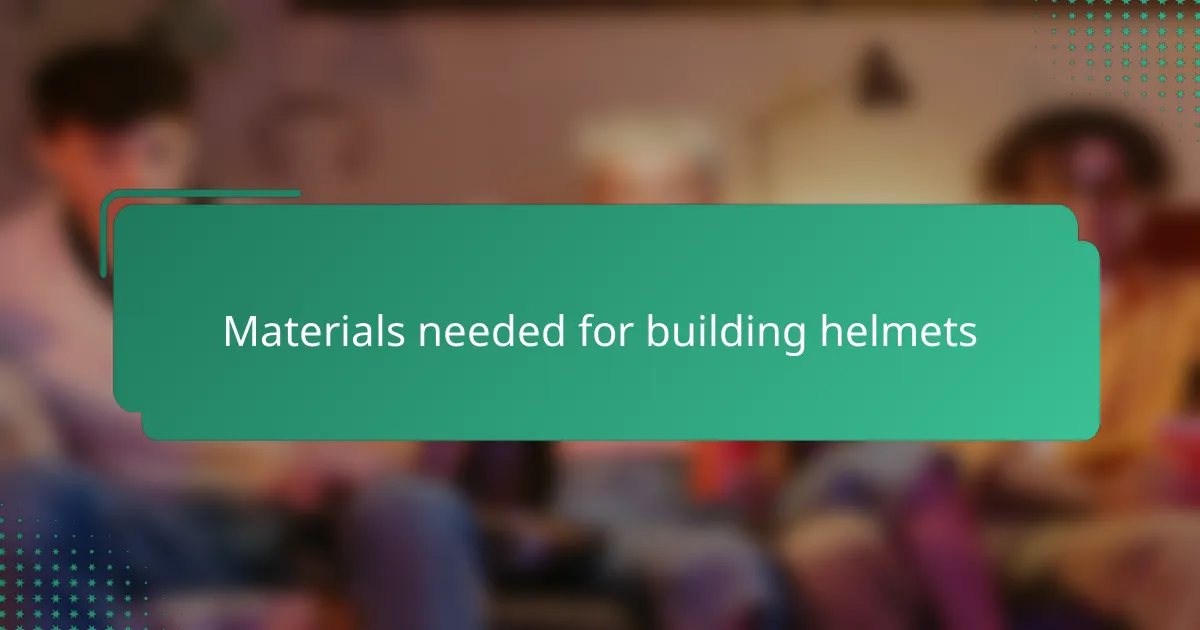
Materials needed for building helmets
When I first set out to build a Stormtrooper helmet, I quickly realized that gathering the right materials was half the battle. You’ll need a sturdy base like ABS plastic or resin, which gives the helmet its smooth, durable surface. It’s important because flimsy materials just won’t hold up to the detailed shaping and finishing required.
Apart from the base materials, things like filler putty, sandpaper, and primer become your best friends. I remember sanding layer after layer, trying to get that flawless finish, and without good-quality sandpaper and filler, it would have looked rough and unfinished. These simple tools may seem mundane, but they truly make a huge difference in the final look.
And let’s not forget the paint – black, white, and occasionally silver for accents. Choosing the right paint is crucial to capture that iconic Stormtrooper shine and depth. I often wondered if spray paint was enough or if I needed something more specialized, but in my experience, investing in automotive-grade paints really elevated the realism of the helmet.

Tools required for helmet construction
When I started building my Stormtrooper helmet, the first thing I realized was how essential having the right tools really is. Simple hand tools like hobby knives and files quickly became my go-to for trimming and shaping the helmet parts. Without them, I honestly would have been lost trying to get those clean, precise edges that make the helmet look crisp and authentic.
Power tools like a Dremel rotary tool were a game-changer for me. It allowed me to smooth out rough surfaces and carve out intricate details with a level of control that hand sanding alone just can’t match. At one point, I spent half a day just perfecting the ventilation holes, and that Dremel made the process much less frustrating. Have you ever struggled with tedious sanding that never seems to end? That’s where investing in these tools pays off.
Of course, clamps and a good workbench brought everything together. I found that steadying the helmet while applying glue or filler made a huge difference in accuracy and comfort during long sessions. I remember balancing pieces awkwardly with my hands before getting clamps—and trust me, it was nowhere near as efficient or satisfying. These small helpers might seem trivial, but they’re truly the backbone of a smooth construction process.
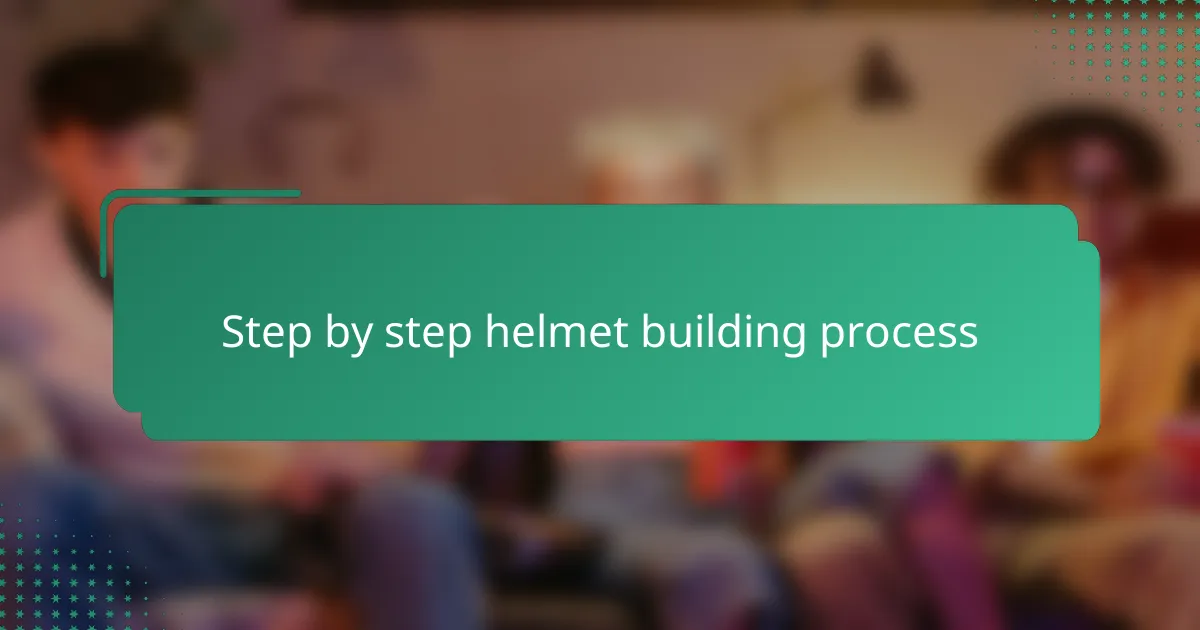
Step by step helmet building process
The first step in building my Stormtrooper helmet was assembling all the individual parts. I carefully trimmed excess plastic from each piece, paying close attention to the alignment—because even a slight mismatch could throw off the whole look. Have you ever experienced that moment of doubt when two parts just don’t seem to fit? That was me, patiently sanding and adjusting until they clicked perfectly.
Next came the challenging but rewarding process of filling and sanding. I spent hours smoothing seams with putty, then sanding those areas down to create an unbroken, seamless surface. It felt like sculpting rather than just assembling, and each coat of primer revealed new imperfections to fix—a test of patience but so satisfying when the finish finally looked flawless.
Painting was the final transformative step. I applied multiple thin layers of white paint, allowing each to dry completely before the next. Watching the helmet’s surface gradually evolve from dull plastic to glossy, battle-ready armor gave me a real sense of achievement. Have you ever seen a project come to life in stages like that? It’s one of the best parts of prop building.
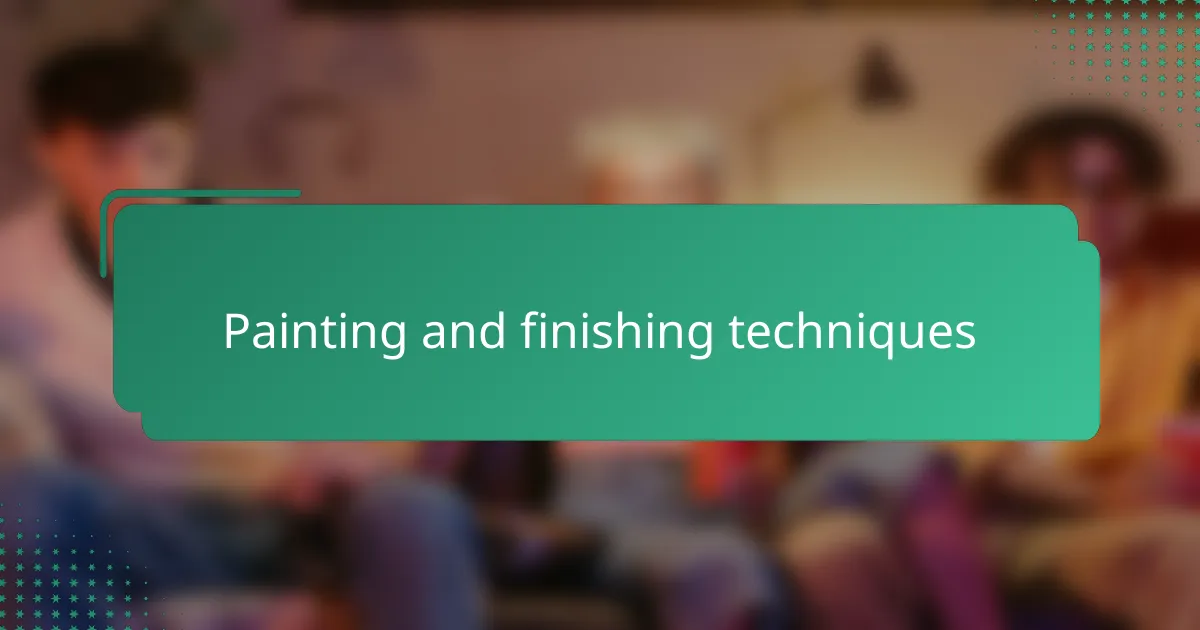
Painting and finishing techniques
Getting the paint just right was a mix of technique and patience for me. I found that spraying several thin coats rather than one thick layer prevented drips and gave the helmet a smooth, even finish. It reminded me how sometimes, slow and steady really does win the race when aiming for that flawless Stormtrooper shine.
Sealing the paint was another step I didn’t skip. Applying a clear gloss coat not only protected the pristine white surface but also replicated that iconic polished armor look. Have you ever wondered why some props look almost brand new despite their age? For me, that protective finish was the secret behind it.
A subtle weathering technique added the final touch of realism. Instead of going overboard, I lightly shaded certain areas with gray and black washes to mimic wear and tear. It gave the helmet character, making it feel like it had truly been through the battles of the Star Wars universe—something I think every prop builder secretly aims for.

Challenges faced during the build
One of the biggest challenges I faced during the build was getting the helmet parts to fit perfectly together. Have you ever tried to force pieces that just aren’t lining up? I spent hours sanding and adjusting those seams, and there were moments of real frustration wondering if I’d ever get that seamless look. But ironically, each tiny imperfection pushed me to refine my skills and be more patient.
Another tough hurdle was mastering the balance between sanding enough to get a smooth surface and sanding too much, risking damage to the delicate parts. It felt like walking a tightrope—one wrong move could ruin hours of work. I remember one evening after sanding, seeing a small crack appear, which meant redoing that entire section. It was discouraging, but it taught me the value of gentle hands and slow progress.
Painting brought its own set of challenges, especially achieving that iconic glossy finish without streaks or runs. I asked myself many times: how do professionals make it look so effortless? The answer was in layering thin coats and letting patience take the lead. When I finally saw the helmet gleam under the studio light, all those struggles felt completely worth it.
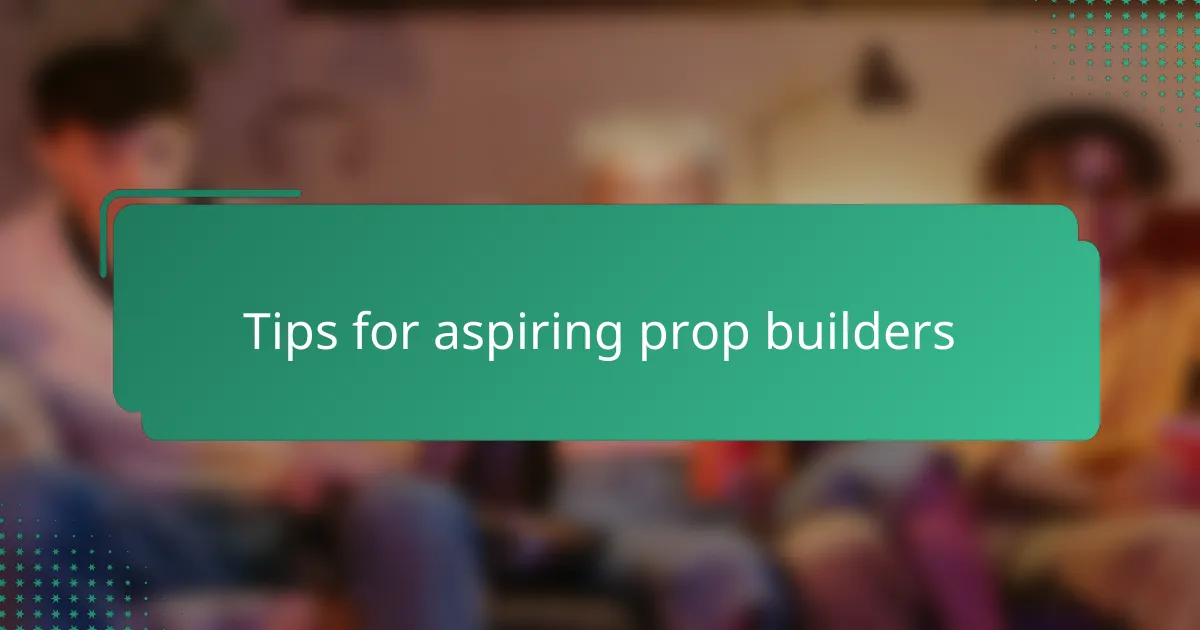
Tips for aspiring prop builders
One thing I can’t stress enough to aspiring prop builders is patience. Have you ever rushed a step only to find yourself fixing mistakes later? I learned the hard way that slowing down—whether sanding a seam or layering paint—makes all the difference between a good helmet and a great one.
Investing in quality tools and materials might seem daunting at first, but trust me, it pays off. When I switched from basic craft knives to a reliable Dremel, my workflow became smoother and my details sharper. It’s like upgrading from a paintbrush to an airbrush; the right tools open new doors for precision and creativity.
Finally, don’t be afraid to ask for help or seek out community advice. I found forums and online groups invaluable when I hit frustrating roadblocks. Sometimes, just hearing someone else say, “I struggled with that too” can boost your confidence and keep you motivated on those long build nights.
